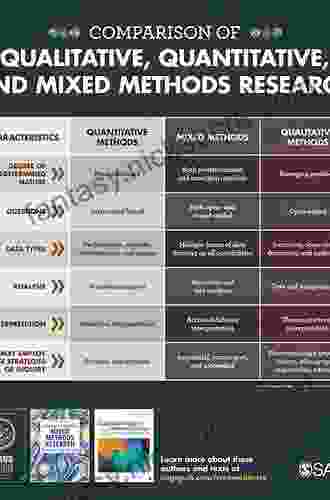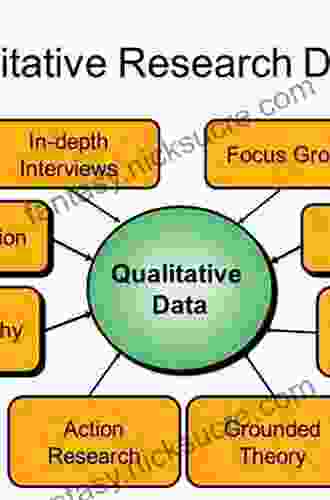Photovoice for Social Justice: Empowering Communities through Storytelling

Photovoice is a participatory research methodology that empowers marginalized communities to document and share their experiences through photography. The approach combines photography with group dialogue, providing a platform for participants to voice their perspectives on social issues and advocate for change. Through the power of visual storytelling, Photovoice has emerged as a transformative tool for raising awareness, facilitating dialogue, and promoting social justice.
History and Origins
Photovoice was first developed by Caroline Wang and Mary Ann Burris in the 1990s as a way to engage women from rural China in a health research project. They recognized the limitations of traditional research methods in capturing the lived experiences of marginalized communities and sought an alternative approach that would allow participants to express themselves authentically.
5 out of 5
| Language | : | English |
| File size | : | 5370 KB |
| Text-to-Speech | : | Enabled |
| Screen Reader | : | Supported |
| Enhanced typesetting | : | Enabled |
| Word Wise | : | Enabled |
| Print length | : | 121 pages |
The Photovoice methodology has since been widely adopted by researchers, practitioners, and community activists around the world. The approach has been successfully implemented in diverse settings, addressing various social issues, including health disparities, environmental justice, education, and human rights.
Key Features of Photovoice
The Photovoice methodology comprises several key features that contribute to its effectiveness:
- Participatory Approach: Photovoice is a participatory research method that places participants at the center of the research process. They are involved in all stages, from identifying research questions to interpreting and disseminating the findings.
- Visual Storytelling: Using photography as the primary medium, Photovoice allows participants to document their experiences and perspectives in a visually engaging way. Photography provides a powerful tool for capturing emotions, experiences, and unspoken narratives.
- Group Dialogue: Photovoice fosters group dialogue and reflection. Participants share their photographs and stories with one another, creating a space for collective storytelling, analysis, and action planning.
- Community Empowerment: By giving voice to marginalized communities, Photovoice empowers participants to challenge stereotypes and advocate for their own needs. The process builds self-confidence, leadership skills, and community solidarity.
Benefits of Photovoice
Photovoice offers numerous benefits for social justice work:
- Raises Awareness: Photovoice raises awareness about social issues by providing a platform for marginalized voices to be heard. The photographs and stories capture the complexities and realities of lived experiences, making them relatable and impactful.
- Facilitates Dialogue: Photovoice creates a safe and supportive space for dialogue and reflection. Participants engage in discussions that explore the underlying causes and consequences of social issues, fostering greater understanding and empathy.
- Promotes Action: Photovoice is not simply a documentation exercise. It aims to empower communities to identify and address the social injustices they face. The photographs and stories serve as evidence for advocacy and policy change.
- Builds Capacity: Photovoice builds capacity within marginalized communities. Participants develop photography skills, critical thinking abilities, and leadership qualities. They become agents of change, advocating for their own rights and well-being.
Examples of Photovoice in Practice
Photovoice has been successfully implemented in a wide range of social justice initiatives:
- Health Disparities: Photovoice has been used to document and address health disparities in underserved communities. Participants have shared photographs that illustrate the barriers to accessing healthcare, the impact of environmental toxins, and the need for culturally sensitive care.
- Environmental Justice: Photovoice has empowered marginalized communities to document and advocate for environmental justice. Participants have used photography to capture the impacts of pollution, climate change, and industrial development on their neighborhoods.
- Education: Photovoice has been used to improve educational outcomes for students from disadvantaged backgrounds. Participants have used photography to share their perspectives on school culture, curriculum, and the challenges they face in accessing quality education.
- Human Rights: Photovoice has been used to document and advocate for human rights abuses. Participants have used photography to expose forced evictions, police brutality, and other forms of oppression.
Challenges and Considerations
While Photovoice offers powerful opportunities for social justice work, it also presents certain challenges:
- Power Dynamics: Researchers and facilitators must be mindful of power dynamics during Photovoice projects. It is important to create a safe and equitable space where participants feel comfortable分享ing their experiences and perspectives.
- Ethical Considerations: Photovoice involves collecting and sharing sensitive information. Researchers must obtain informed consent from participants and ensure that their privacy and dignity is protected.
- Data Analysis: Interpreting and analyzing Photovoice data can be challenging due to the subjective and multifaceted nature of the photographs and narratives. Researchers must develop appropriate methodologies that respect the perspectives and experiences of participants.
- Sustainability: Photovoice projects require long-term commitment and support. Researchers and practitioners must ensure that the momentum and outcomes of the project are sustained beyond the initial implementation phase.
Photovoice is a powerful tool for social justice work. By empowering marginalized communities to document and share their experiences through photography, Photovoice raises awareness about social issues, facilitates dialogue, promotes action, and builds capacity for change. As a participatory research methodology, Photovoice places communities at the center of the research process, valuing their voices and experiences. By giving voice to the voiceless, Photovoice contributes to a more just and equitable society.
5 out of 5
| Language | : | English |
| File size | : | 5370 KB |
| Text-to-Speech | : | Enabled |
| Screen Reader | : | Supported |
| Enhanced typesetting | : | Enabled |
| Word Wise | : | Enabled |
| Print length | : | 121 pages |
Do you want to contribute by writing guest posts on this blog?
Please contact us and send us a resume of previous articles that you have written.
 Fiction
Fiction Non Fiction
Non Fiction Romance
Romance Mystery
Mystery Thriller
Thriller SciFi
SciFi Fantasy
Fantasy Horror
Horror Biography
Biography Selfhelp
Selfhelp Business
Business History
History Classics
Classics Poetry
Poetry Childrens
Childrens Young Adult
Young Adult Educational
Educational Cooking
Cooking Travel
Travel Lifestyle
Lifestyle Spirituality
Spirituality Health
Health Fitness
Fitness Technology
Technology Science
Science Arts
Arts Crafts
Crafts DIY
DIY Gardening
Gardening Petcare
Petcare Elizabeth Thompson
Elizabeth Thompson Matt Doeden
Matt Doeden Jennifer Kolari
Jennifer Kolari Kent Hrbek
Kent Hrbek Jakub Marian
Jakub Marian Michael D Alessio
Michael D Alessio Anya Kamenetz
Anya Kamenetz Steven M Levy
Steven M Levy Lee Gutkind
Lee Gutkind Paula Yoo
Paula Yoo Neil D Jespersen
Neil D Jespersen J Robert King
J Robert King Paul Halpern
Paul Halpern Herschel Knapp
Herschel Knapp Jon M Sweeney
Jon M Sweeney Larry Baush
Larry Baush Kasey Edwards
Kasey Edwards Issai Chozanshi
Issai Chozanshi Peter Aitken
Peter Aitken Tara Bianca
Tara Bianca Megan Don
Megan Don Phoebe Bailey
Phoebe Bailey Christian Smith
Christian Smith Rachel Burgess
Rachel Burgess Martin Davies
Martin Davies Aylette Jenness
Aylette Jenness Conway X Bowman
Conway X Bowman Gianna Sobol
Gianna Sobol Steven Hassan
Steven Hassan Michael J Epstein
Michael J Epstein David Nirenberg
David Nirenberg Ginger Sinsabaugh
Ginger Sinsabaugh Mike Gibson
Mike Gibson Doug Fletcher
Doug Fletcher Clifford A Pickover
Clifford A Pickover Morgan Oostra
Morgan Oostra Stephen L Morgan
Stephen L Morgan Mike Veny
Mike Veny James W Finegan
James W Finegan Elliot Kay
Elliot Kay Greg Witt
Greg Witt Wendy Hinman
Wendy Hinman Jacqueline B Persons
Jacqueline B Persons Ted Kaczynski
Ted Kaczynski Charlotte E English
Charlotte E English Lucas Bessire
Lucas Bessire Krista Tippett
Krista Tippett Special Tactics
Special Tactics S W Wilcox
S W Wilcox Stephen Arterburn
Stephen Arterburn Isabel Fonseca
Isabel Fonseca Kindle Edition
Kindle Edition Bill Hammack
Bill Hammack Farah Heron
Farah Heron Janice Selekman
Janice Selekman Tiffany Loggins Psyd
Tiffany Loggins Psyd Karen Palacios Jansen
Karen Palacios Jansen Tom Humphrey
Tom Humphrey James P Allen
James P Allen David Joyce
David Joyce Marc Bona
Marc Bona T Edward Nickens
T Edward Nickens Paul Levy
Paul Levy Jeremy Paxman
Jeremy Paxman Wendy Doniger
Wendy Doniger Pat Cohen
Pat Cohen Russ Harris
Russ Harris J T Williams
J T Williams Dina Nayeri
Dina Nayeri Jarrett Dapier
Jarrett Dapier Marty Gitlin
Marty Gitlin Sarah Zettel
Sarah Zettel Edwin H Friedman
Edwin H Friedman Mindy Mcginnis
Mindy Mcginnis Paul Brummell
Paul Brummell Diondre Mompoint
Diondre Mompoint Bill Moeller
Bill Moeller Daniel J Velleman
Daniel J Velleman Bode Miller
Bode Miller Max Help Workbooks
Max Help Workbooks Tony Guerra
Tony Guerra Rod Powers
Rod Powers Gary Dean Quesenberry
Gary Dean Quesenberry Jake Jacobson
Jake Jacobson Kevin Marx
Kevin Marx Richard Rohr
Richard Rohr Bill Bennett
Bill Bennett Peter Julius Sloan
Peter Julius Sloan Bill Nowlin
Bill Nowlin Charles Duhigg
Charles Duhigg Joan Roughgarden
Joan Roughgarden Rocky Mcelveen
Rocky Mcelveen Nrup Parikh
Nrup Parikh James Dashner
James Dashner David Benjamin
David Benjamin Enzo Tonti
Enzo Tonti Nicole R Taylor
Nicole R Taylor Sue Enquist
Sue Enquist Dr Julissa Hernandez Nd Cnhp
Dr Julissa Hernandez Nd Cnhp P J E Peebles
P J E Peebles Supersummary
Supersummary Michael J Tougias
Michael J Tougias Zoe Hana Mikuta
Zoe Hana Mikuta Helen Clarke
Helen Clarke Valeria Ray
Valeria Ray Elsevier
Elsevier Gwendoline Smith
Gwendoline Smith Sharmila Desai
Sharmila Desai George Mahood
George Mahood Frank Giampaolo
Frank Giampaolo Scarlett Curtis
Scarlett Curtis Sam Harris
Sam Harris George C Thomas
George C ThomasMax Youngquist
 Mercedes Lackey
Mercedes Lackey Robert Byron
Robert Byron Izzy Judd
Izzy Judd Holly Jackson
Holly Jackson Karen Armstrong
Karen Armstrong Ross Edgley
Ross Edgley Rachna Chhachhi
Rachna Chhachhi Paul Bellow
Paul Bellow Zach Schonbrun
Zach Schonbrun Sabaa Tahir
Sabaa Tahir Thomas Cleary
Thomas Cleary Tony Ortega
Tony Ortega Bill Miller
Bill Miller Deborah J Rumsey
Deborah J Rumsey Robert Greene
Robert Greene Doug Scott
Doug Scott Tom Dodd
Tom Dodd Sheridan Anderson
Sheridan Anderson Ofer Gal
Ofer Gal Fiona Danks
Fiona Danks Bill Gutman
Bill Gutman Wanza Leftwich
Wanza Leftwich William F Keegan
William F Keegan Stanislas Dehaene
Stanislas Dehaene Bryan Irwin
Bryan Irwin Frank S Ring
Frank S Ring Stephan A Hoeller
Stephan A Hoeller Richard Post
Richard Post Susan M Orsillo
Susan M Orsillo Rob Casey
Rob Casey Chris Sims
Chris Sims Jessica Denay
Jessica Denay T Whitmore
T Whitmore Christopher Banecks
Christopher Banecks Marie Viljoen
Marie Viljoen Sophia Freeman
Sophia Freeman Karyn D Hall
Karyn D Hall Katie Singer
Katie Singer Dan Garner
Dan Garner John C Norcross
John C NorcrossR E S
 Bob Glover
Bob Glover Mosby
Mosby Henry Nicholls
Henry Nicholls Michael Lempert
Michael Lempert Terry Pratchett
Terry Pratchett Kevin Sverduk
Kevin Sverduk Beck Weathers
Beck Weathers Sheila Mackechnie Murtha
Sheila Mackechnie Murtha Zigzag English
Zigzag English Erin Mckittrick
Erin Mckittrick Bharath Ramsundar
Bharath Ramsundar Jedd K Parkinson
Jedd K Parkinson Ramona Finn
Ramona Finn Styrling Strother
Styrling Strother Mark Vanhoenacker
Mark Vanhoenacker Hayley Mitchell Haugen
Hayley Mitchell Haugen Jennifer Shannon
Jennifer Shannon Claire Russell
Claire Russell Donncha Hanna
Donncha Hanna Rabbi Jason Sobel
Rabbi Jason Sobel Mark Young
Mark Young Billy Martin
Billy Martin Phil Robertson
Phil Robertson Bjorn Kiggen
Bjorn Kiggen Joshua Foer
Joshua Foer Erin Beaty
Erin Beaty Henry Charles Lea
Henry Charles Lea Jacques Steinberg
Jacques Steinberg Jeff Wheeler
Jeff Wheeler Yau Ming Ng Thompson
Yau Ming Ng Thompson Jamie Aten
Jamie Aten J Douglas Faires
J Douglas Faires Dan Hamilton
Dan Hamilton Tiffany Bergin
Tiffany Bergin Deborah Blum
Deborah Blum James R Payne
James R Payne David Price
David Price Herbert Dorsey
Herbert Dorsey Kenny Dill
Kenny Dill Oscar Nilson
Oscar Nilson Mark Lehner
Mark Lehner Felicity Aston
Felicity Aston Laurence Price
Laurence Price Bill Patton
Bill Patton Patrick Mcginty
Patrick Mcginty David E Stuart
David E Stuart Ezekiel Eversand
Ezekiel Eversand Justin Lichter
Justin Lichter Jane Nelsen
Jane Nelsen Melissa Layne
Melissa Layne Steve Biddulph
Steve Biddulph Genius Reads
Genius Reads Marisa Imon
Marisa Imon Stacie Mahoe
Stacie Mahoe Silvia Dunn
Silvia Dunn Gary Kamiya
Gary Kamiya Shawn Levy
Shawn Levy Paul Francis
Paul Francis James Alexander Currie
James Alexander Currie Heather Long
Heather Long Jared Derksen
Jared Derksen Gavin Weightman
Gavin Weightman John Brierley
John Brierley John Kettle
John Kettle Leah Day
Leah Day Dashka Slater
Dashka Slater Douglas W Ota
Douglas W Ota Marion Zimmer Bradley
Marion Zimmer Bradley Kiera Cass
Kiera Cass Ta Nehisi Coates
Ta Nehisi Coates Joshua Becker
Joshua Becker Thad Beery
Thad Beery Chris Ferrie
Chris Ferrie Editors Of Garden And Gun
Editors Of Garden And Gun Sharon Bergen
Sharon Bergen Charles A Rhodus
Charles A Rhodus Sara Low
Sara Low Jojo Siwa
Jojo Siwa Maggi Savin Baden
Maggi Savin Baden Lynette Rushton
Lynette Rushton Simon Baron Cohen
Simon Baron Cohen Kate Marchant
Kate Marchant David Halberstam
David Halberstam Dick Edie
Dick Edie Margo Armstrong
Margo Armstrong Sara Dyer
Sara Dyer Clement Salvadori
Clement Salvadori Robert A Pelcovits
Robert A Pelcovits Yossi Ghinsberg
Yossi Ghinsberg J D Gauchat
J D Gauchat Manoj Sharma
Manoj Sharma Andrea Cremer
Andrea Cremer Dawn Huebner
Dawn Huebner Dinah Bucholz
Dinah Bucholz Dr Nancy L Nolan
Dr Nancy L Nolan Sue L Hamilton
Sue L Hamilton Mike Westerfield
Mike Westerfield Marilee Lebon
Marilee Lebon Zane Grey
Zane Grey Dave Pine
Dave Pine Elizabeth King
Elizabeth King Dan Yaccarino
Dan Yaccarino Carolyn Schulz
Carolyn Schulz Mark Solms
Mark Solms Ian Tuhovsky
Ian Tuhovsky Bob Duff
Bob Duff Dan Murphy
Dan Murphy Dean Keith Simonton
Dean Keith Simonton Ingrid Chalufour
Ingrid Chalufour Erin Mcrae
Erin Mcrae Tina Cassidy
Tina Cassidy Meagan Trayler
Meagan Trayler Jackie Brown
Jackie Brown G William Barnard
G William Barnard Kristopher Martel
Kristopher Martel Bex Gunn
Bex Gunn Rick Reilly
Rick Reilly Carlos Torres
Carlos Torres Peter Jackson
Peter Jackson Jackie Bolen
Jackie Bolen Pat Drake
Pat Drake Robert F Burgess
Robert F Burgess Zecharia Sitchin
Zecharia Sitchin Jonathan Crichton
Jonathan Crichton Michael Hartman
Michael Hartman Kat Kruger
Kat Kruger Mark Booth
Mark Booth Adiba Jaigirdar
Adiba Jaigirdar Ellen Schuthof Lesmeister
Ellen Schuthof Lesmeister Geraldine Van Bueren
Geraldine Van Bueren Vukota Boljanovic
Vukota Boljanovic Carl B Tolman
Carl B Tolman Joy Hakim
Joy Hakim Paris Williams
Paris Williams Suzannah Rowntree
Suzannah Rowntree Brienne Murk
Brienne Murk John H Holland
John H Holland Pete Spencer
Pete Spencer Robert Axelrod
Robert Axelrod Brandon Sanderson
Brandon Sanderson Editors Of Sports Illustrated
Editors Of Sports Illustrated Bev Pettersen
Bev Pettersen Sang H Kim
Sang H Kim R E Skibiski
R E Skibiski Jacques Devore
Jacques Devore Richard Holmes
Richard Holmes Colin Thubron
Colin Thubron Harlan Coben
Harlan Coben Sanford Holst
Sanford Holst Jane Bottomley
Jane Bottomley Rick Steves
Rick Steves John Mccollister
John Mccollister Tim Weston
Tim Weston Cheryl Marlene
Cheryl Marlene Chris Sajnog
Chris Sajnog Helen Irlen
Helen Irlen Sandra Davidson
Sandra Davidson Rough Guides
Rough Guides Jen Castleberry
Jen Castleberry Elizabeth A Stanley
Elizabeth A Stanley Colleen Graves
Colleen Graves The Uk Mathematics Trust
The Uk Mathematics Trust Jeffrey Lindsey
Jeffrey Lindsey Robert P Beebe
Robert P Beebe Eric H Cline
Eric H Cline Michael W Eysenck
Michael W Eysenck Henry M Cowles
Henry M Cowles Kasun Indrasiri
Kasun Indrasiri Shannon Sovndal
Shannon Sovndal Evan Purcell
Evan Purcell Jessica Wiebe
Jessica Wiebe Kevin C Kelleher Md Md
Kevin C Kelleher Md Md Martyn Denscombe
Martyn Denscombe Leland Chant
Leland Chant Jitendra Chouksey
Jitendra Chouksey Michael Sullivan
Michael Sullivan Bill Boyum
Bill Boyum Linda D Dahl
Linda D Dahl Dawn Hadley
Dawn Hadley Craig Chappelow
Craig Chappelow Chris Napier
Chris Napier Victoria Johnson
Victoria Johnson Robert Bruce Thompson
Robert Bruce Thompson Stephanie Manley
Stephanie Manley Kristin N Spencer
Kristin N Spencer Rachael Scdoris
Rachael Scdoris Davi Kopenawa
Davi Kopenawa Rebekah Nathan
Rebekah Nathan Curvebreakers
Curvebreakers Bryan Mann
Bryan Mann Emma Griffin
Emma Griffin Manly P Hall
Manly P Hall Callum Roberts
Callum Roberts Bill Gladstone
Bill Gladstone Carson Sievert
Carson Sievert Elizabeth Winthrop
Elizabeth Winthrop Ian Wilson
Ian Wilson Ken Venturi
Ken Venturi Max Lugavere
Max Lugavere Vanessa Lapointe
Vanessa Lapointe Matthew Bowling
Matthew Bowling Holly Donahue Singh
Holly Donahue Singh Melissa Abramovitz
Melissa Abramovitz Simon Pridmore
Simon Pridmore John Mccannon
John Mccannon Michael Matthews
Michael Matthews Hilary Nangle
Hilary Nangle Yakima Canutt
Yakima Canutt General
General Lisa Dorfman
Lisa Dorfman Ross Bonander
Ross Bonander James Patterson
James Patterson Blake Sebring
Blake Sebring Jon Loeliger
Jon Loeliger Kate Darling
Kate Darling Megan Mcgrory Massaro
Megan Mcgrory Massaro Curt Sampson
Curt Sampson Bill Streever
Bill Streever Brian Crist
Brian Crist Jamie Dumas
Jamie Dumas Susan Shelby Torrance
Susan Shelby Torrance Dan Blanchard
Dan Blanchard Alan Lawrence Sitomer
Alan Lawrence Sitomer Michael Volkmar
Michael Volkmar Jamie Foxx
Jamie Foxx Charles Goodwill
Charles Goodwill Virginia Smith Harvey
Virginia Smith Harvey Steve Schwartz
Steve Schwartz Pedro Urvi
Pedro Urvi Cj Andersen
Cj Andersen Holger Schutkowski
Holger Schutkowski Charlie Craven
Charlie Craven Simon Buxton
Simon Buxton Joe Byers
Joe Byers Fodor S Travel Guides
Fodor S Travel Guides Irene Mceachen
Irene Mceachen Joie Jager Hyman
Joie Jager Hyman Marsha Vanwynsberghe
Marsha Vanwynsberghe Nancy Romita
Nancy Romita Gary Nicol
Gary Nicol Gary Player
Gary Player Bill Karwin
Bill Karwin John Muir Laws
John Muir Laws Louis Sachar
Louis Sachar Mary Griffith
Mary Griffith Marie Max House
Marie Max House Frederica Relly
Frederica Relly Thomas Bailey
Thomas Bailey Carlos Castaneda
Carlos Castaneda Eric A Weiss Md
Eric A Weiss Md Richard B Pelzer
Richard B Pelzer Billy Griffiths
Billy Griffiths Joseph Campbell
Joseph Campbell Phil Genova
Phil Genova Jessica Taylor
Jessica Taylor Matt Parker
Matt Parker Brad States
Brad States Joseph Edminister
Joseph Edminister Olivia Gordon
Olivia Gordon Al Walsh
Al Walsh Charles Simpson
Charles Simpson David E Johnson
David E Johnson Rob Steger
Rob Steger Ryan Johnston
Ryan Johnston Michael Tlanusta Garrett
Michael Tlanusta Garrett Freddie Fernandez
Freddie Fernandez Cherie Dimaline
Cherie Dimaline Gregg Jackson
Gregg Jackson Luciano Floridi
Luciano Floridi Laurie Rubin
Laurie Rubin Fred H Croom
Fred H Croom Betsy Herman
Betsy Herman Ernest Raymond
Ernest Raymond Laura Nowlin
Laura Nowlin Shantel Silbernagel
Shantel Silbernagel Scott Wilson
Scott Wilson Ron Elbe
Ron Elbe Bob Duchesne
Bob Duchesne Rupert Spira
Rupert Spira C D Holmes Miller
C D Holmes Miller Bill Schneider
Bill Schneider Hugh Neill
Hugh Neill Marcus Brotherton
Marcus Brotherton H P Lovecraft
H P Lovecraft Richard W Fisher
Richard W Fisher Diana Wynne Jones
Diana Wynne Jones D C Haenlien
D C Haenlien Jim Greenwood
Jim Greenwood Chris Fischer
Chris Fischer Daniele Benedettelli
Daniele Benedettelli Vernon G Zunker
Vernon G Zunker Zavonda Vinson Parrish
Zavonda Vinson Parrish Sandi Mann
Sandi Mann Jelena Bogdanovic
Jelena Bogdanovic Sandra Berenbaum
Sandra Berenbaum Dylan Tomine
Dylan Tomine Gail Fay
Gail Fay Shelby Mahurin
Shelby Mahurin Linda Bauer
Linda Bauer Emma Cannon
Emma Cannon Joann Cianciulli
Joann Cianciulli Blaine Bartel
Blaine Bartel Claudia Mazzucco
Claudia Mazzucco
Light bulbAdvertise smarter! Our strategic ad space ensures maximum exposure. Reserve your spot today!

 Charlie ScottUnveiling the Enchanting Tapestry of Marion Zimmer Bradley's "The Mists of...
Charlie ScottUnveiling the Enchanting Tapestry of Marion Zimmer Bradley's "The Mists of...
 Gabriel HayesAn In-Depth Introduction to Data Analysis: A Comprehensive Guide to Unlocking...
Gabriel HayesAn In-Depth Introduction to Data Analysis: A Comprehensive Guide to Unlocking... Ivan TurgenevFollow ·11.1k
Ivan TurgenevFollow ·11.1k Langston HughesFollow ·19.9k
Langston HughesFollow ·19.9k Isaac AsimovFollow ·5k
Isaac AsimovFollow ·5k Rudyard KiplingFollow ·11.1k
Rudyard KiplingFollow ·11.1k Nick TurnerFollow ·6.8k
Nick TurnerFollow ·6.8k Miguel NelsonFollow ·19.4k
Miguel NelsonFollow ·19.4k Miguel de CervantesFollow ·4.3k
Miguel de CervantesFollow ·4.3k Dylan HayesFollow ·12k
Dylan HayesFollow ·12k

 Sammy Powell
Sammy PowellBalancing Your Hormones Naturally: Regaining Fertility...
Hormones play a vital role in our...

 Kendall Ward
Kendall WardThe Other Baby Book: A Comprehensive Guide to Baby's...
The Other Baby...

 Kenneth Parker
Kenneth ParkerA Comprehensive Guide to Yoga Sadhana for Mothers:...
Motherhood is a...

 Neil Parker
Neil ParkerInside the Secret Space Programs
An Exposé...
5 out of 5
| Language | : | English |
| File size | : | 5370 KB |
| Text-to-Speech | : | Enabled |
| Screen Reader | : | Supported |
| Enhanced typesetting | : | Enabled |
| Word Wise | : | Enabled |
| Print length | : | 121 pages |










